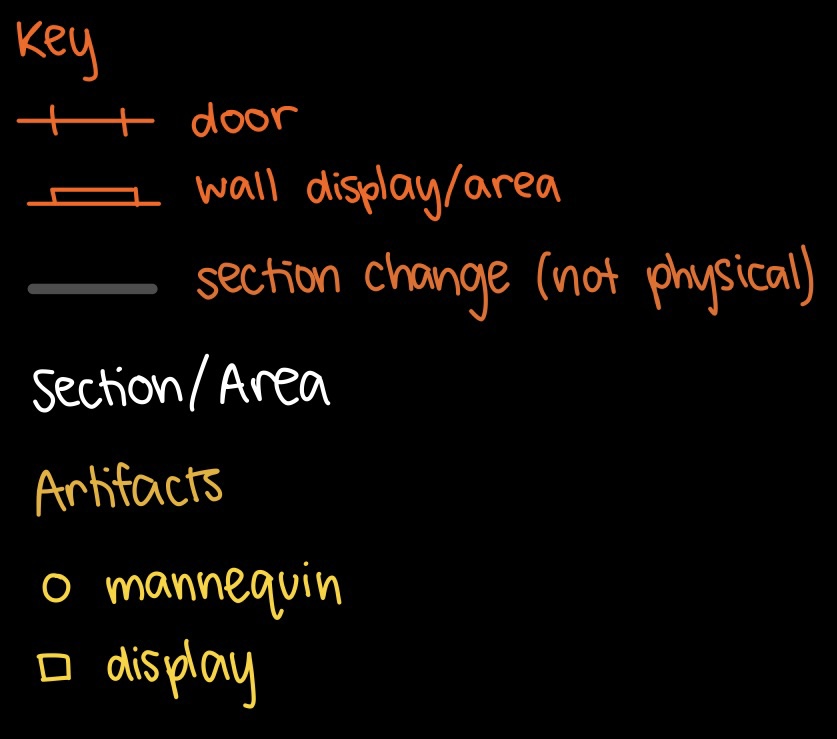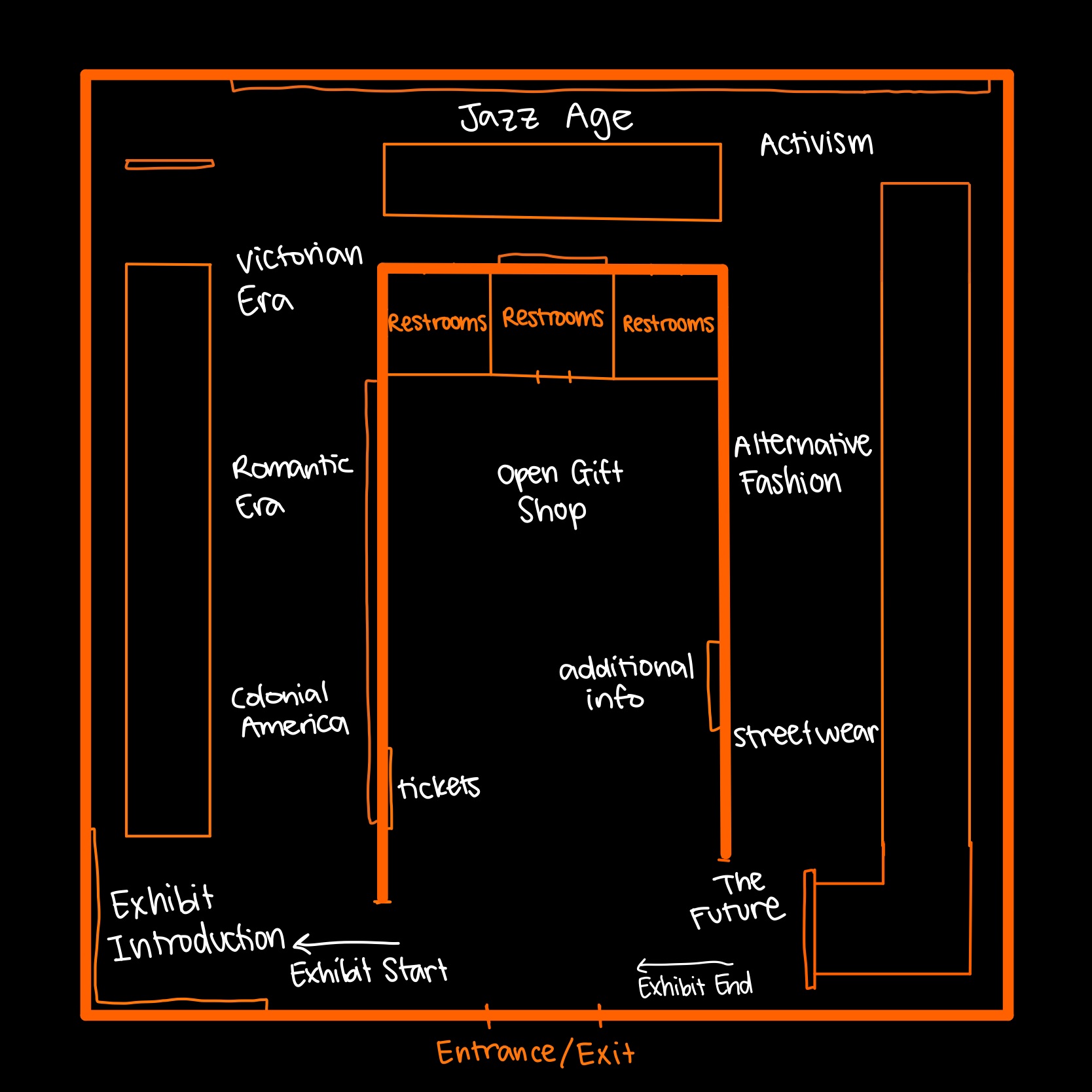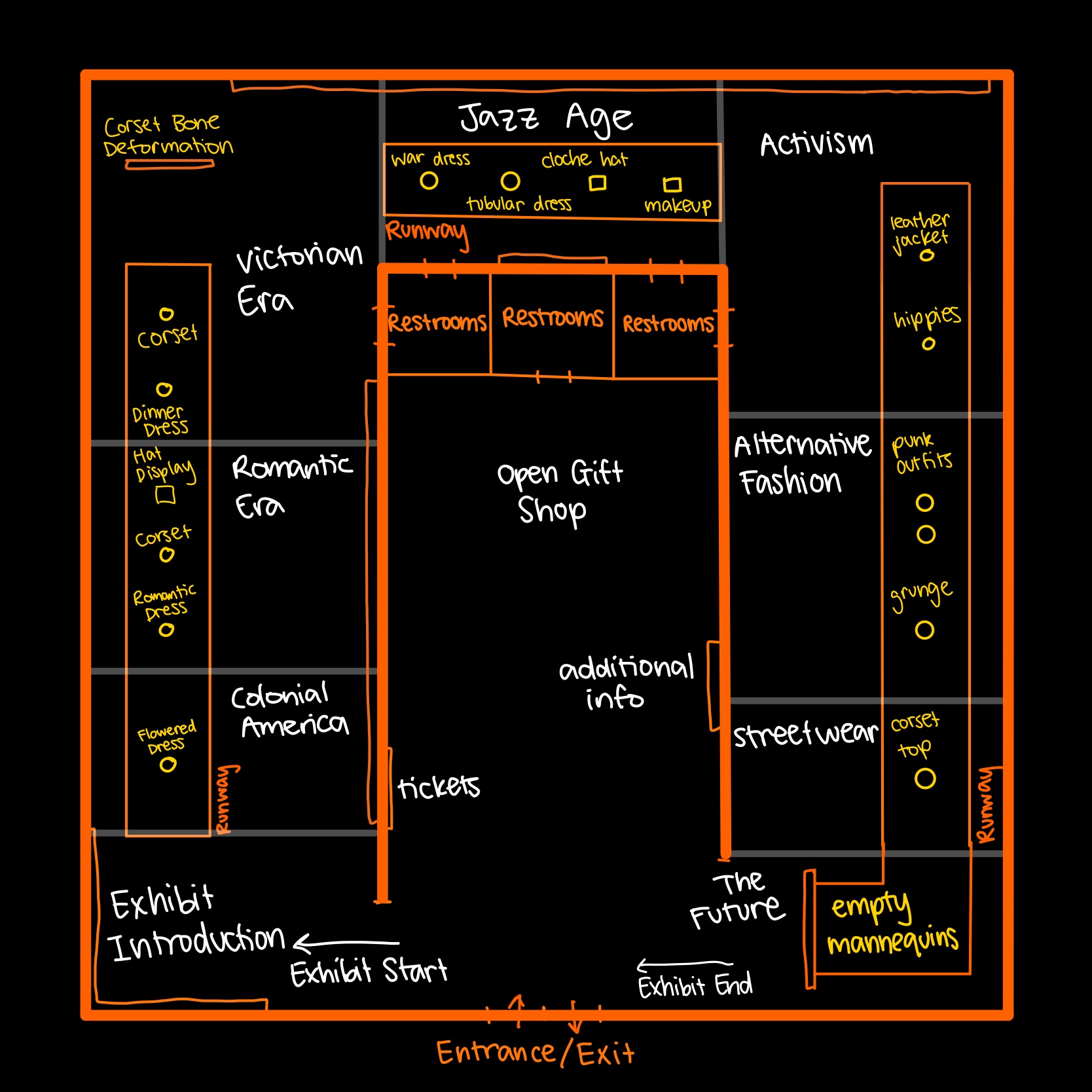Exhibit Map
The artifacts are placed linearly, both to imitate the runway and a timeline. As the visitor walks through the exhibit, they can experience a fashion show of sorts, while also walking forward through time. Descriptions are placed on a small sign next to each artifact, small enough to not distract from the overall appearance but still provide visitors with information that they need.
The three sides of the exhibit are chosen to indicate three aesthetic modes; the first branch shows a very strict social norm, the second a time of loosening customs, and the third with the most flexible standards. This happens to correspond with the chronological order of the artifacts, which makes the exhibit feel more connected. The branches also separate the light and sound from the other branches, allowing an immersive experience through the years. For the first branch, the area is lit by fake candles, to minimize fire risk while imitating the lighting used at the time. Folk songs and classical music would play in the background for the atmosphere. The second room uses art deco light fixtures. For this branch, light jazz music is played, alternating with patriotic marches. The final branch would have street lights, with music by Nirvana, the Beatles (more of their psychedelic songs), and Dua Lipa, to show the vast spread of music from that time period. In this section, instead of playing the same music throughout the branch, the music is played near the time period it came from, to give the impression of passing by on the street.
At the end of the exhibit, a board is placed to show the information about the future. The cutting off of the runway shows that the future is still developing. The halo of light around the board coming from the doorway gives the impression of something to discover or look forward to.


Version with the specific artifact locations filled in:
